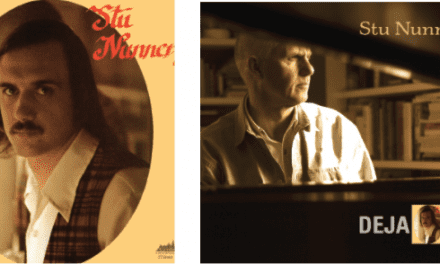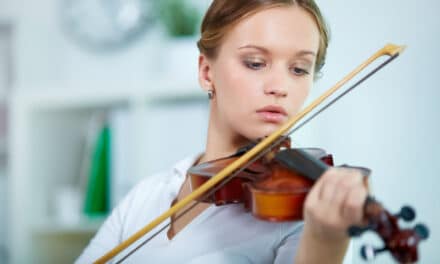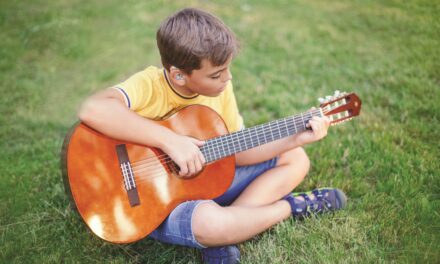Leading with warmth and compassion and not just a technical mindset is often the best way to provide musicians – and all patients – with the audiology care they need.
By Laura Sinnott, AuD
An audio engineer and music major first, I career-expanded into audiology in my 30s. I felt at home with much of audiology during my studies: the precision of pure tone audiometry, rules for diagnosing hearing loss, calibrating equipment, and real-ear measurements. Many of the music industry professionals I saw expected the latest technology, highly tweakable hearing devices, and an audiologist fluent in the language of audio. I felt even more at home.
However, over the years, I have learned to shake up a clinical, investigative, technical mindset with warmth, compassion, and humanity. I came to realize that even audio engineers, the most technical-oriented people in the music industry, respond more to this.
Humanity, not my music background, has proven to be my most successful “tool” when working with musicians.
Further reading: Addressing Music and Stress
Inspiring Advice
Richard Einhorn, a musician, composer, and advocate for people with hearing loss, spoke at my commencement (CUNY Graduate Center). His advice was eye, ear, and heart opening. He insisted that we audiologists take a two-wing approach to our practice. First, see the person, not a patient.
Richard expounded: “You don’t need your expertise, but your humanity. Mentally take off your white coat.” People meet with us and are often nervous and vulnerable, or perhaps excited, too, with impossible expectations. Especially professional musicians and engineers, whose hearing is crucial to their livelihood. How do we bring forth our humanity so we can connect with this person? Not with jargon, Richard told us, but with compassion.
Further reading: Composing with Hearing Loss, by Richard Einhorn
Second, be like an icicle. An icicle? The ice skating enthusiast in me was curious beyond belief. Well, Richard reminded us that, “another part of your mind … needs to coldly observe every nuance of your interaction and note the facts with the precision of a, well, a fine doctor of audiology!”
The detective-audiologist must ask lots of questions (“Do you pull one in-ear monitor out?”) and be wary of making assumptions (not every notch at 4kHz means noise exposure).
Further reading: Hearing Aid Frequency Response Characteristics for Music
Gaining a Musician’s Trust
So how does Richard Einhorn’s advice manifest in my music-industry audiology practice?
Gaining trust is my first priority when I meet with a music industry professional. Currently, I practice in two environments: teleaudiology through the non-profit organization MusiCares and the forward-thinking, hearing health company Tuned, and then in-person residencies with orchestras. Though the mediums are different, I start the same way: active listening and a detailed case history. I ask the person to “give me the story of your ears.”
This usually breaks down the clinician-patient dynamic right away and we become two humans talking and listening to each other. I listen like both an icicle and a human. When they explain their history, concerns, and questions, clues surface that help me figure out how to individualize recommendations in a way that will best resonate with the person.
Audiology Education
The second priority is education. I often provide supportive materials after the consultation because we know that people forget most of what healthcare providers say. Topics may include:
- Anatomy basics if it’s relevant for the person
- Hearing disorders
- Difficulty in loud environments but normal thresholds/passed the screener? Discuss hidden hearing loss.
- Detailed device information (many music-industry professionals expect detail)
- For example, there are differences between two of the most popular electronic earplugs that are not described on the company website. I share a Tuned video that breaks down the differences.
- Easily accessible technology for outside-work situations
- Live Listen with AirPods Pro for help in restaurants
- If a follow-up appointment isn’t an option, I provide tutorials on inserting custom ear products
- I created a Sound Culture ASI Audio 3DME custom ear tip tutorial that goes there – yes, the saliva technique is included
Testing and Consultation
After education, my approach diverges because of the time constraints of the orchestra members I work with. We take ear impressions, administer pure tone threshold tests up to 16 kHz (typically no bone conduction unless risk for conductive hearing loss), sometimes perform a QuickSIN or REAT verification, help with earplug fit issues, and discuss hearing protection options.
Teleaudiology practice with Tuned and MusiCares has helped me evolve tremendously. Tuned is truly a distinctive company because we aren’t tied to any device manufacturer, and selling hearing devices is not Tuned’s bread and butter; holistic hearing care is. Consultations force audiologists to practice at the top of our licenses, because while we do provide a hearing screener, we don’t administer diagnostic tests, take ear impressions, or fit or program hearing aids.
Music-industry professionals I see through Tuned ultimately receive more counseling, education, and brainstorming on strategies because we simply have more time. Musicians seen through Tuned also always receive a consultation note full of resources and links.
Putting the Human-First Approach into Practice
Here is an example of how the human first-approach might play out in my practice.
Let’s say I see two violinists in the same orchestra who are the same age and gender, and have similar thresholds.
However, one violinist is confident, secure, and wants to put her hearing first. Her father, a musician, lost his hearing and now won’t attend social gatherings, and she wants to live as rich of a life for as long as possible.
The other violinist is also a soloist, has ambitions to become concertmistress, and is most concerned with playing with accurate tone. She is concerned that hearing protection will significantly compromise her goals. Will my recommendations be the same? Definitely not.
Ideally, they would both simply use hearing protection in situations where they’re at risk for hearing loss. But it’s not that straightforward.
The violinist concerned most with her hearing agreed to try custom ER15 earplugs, and keep foam earplugs nearby as a backup since custom earplugs take longer to insert (orchestral players often need to insert and remove earplugs in less than three seconds). She decided to try to wear the customs as much as possible, including during rehearsals and performances. I let her know that it wasn’t necessary to wear them all the time, but I still supported her decision.
For the aspiring concertmistress, I initially did not even suggest using earplugs during ensemble rehearsals or performances. Why? She was tense and nervous, but brave enough to show up for the consultation, so the last thing I wanted to do was give her anxiety-provoking recommendations. I asked for more details about her day. She explained that she spends a minimum of 2 hours per day practicing alone, rides the subway, and frequently goes to restaurants. We discussed NIOSH RELs and her loud sound “budget,” and how to leave more room for loud music by managing high sound levels outside of music: active noise canceling earphones on the subway, and strategies for limiting time or lowering sound levels (strategic seating, dining earlier, even earplugs) at loud restaurants. She was immediately amenable to those suggestions.
Finally, I broached the idea of using hearing protection while playing, carefully watching her reactions as I spoke. I asked what she thought about setting aside 10 minutes a day while practicing alone to play with earplugs.
Just like you need to ear train to different room acoustics, you need to ear or brain train to play while wearing earplugs.
“Ten minutes a day? I can do that,” she said. She left feeling relieved.
Further reading: The Art of Accurate Earmold Impressions for In-Ear Monitors
Satisfaction and Empowerment
Technology and personal hearing protection recommendations and tutorials are a huge part of my approach to working with music industry professionals. However, the ability to develop trust, and then together figure out which tech works best for that unique individual, seems to result in satisfied and empowered people.
Laura Sinnott, AuD, is head of devices at Tuned, and owner of Sound Culture, a private practice based in Central New York. At Tuned, she leverages her years as a sound engineer to formally evaluate devices before they are added to the Tuned offerings. She also produces video content on a range of products. Sound Culture serves musicians via orchestra hearing preservation programs.
Featured image: For a music audiologist, a grand piano is sometimes part of the equipment needed for an appointment. But the technical aspects of a session are usually not the most important, at least at the outset. Photo: Laura Sinnott, AuD,
Original citation for this article: Sinnott L. Music Industry Audiologist: The Human-First Approach. Hearing Review. 2024;31(1):24-25.





